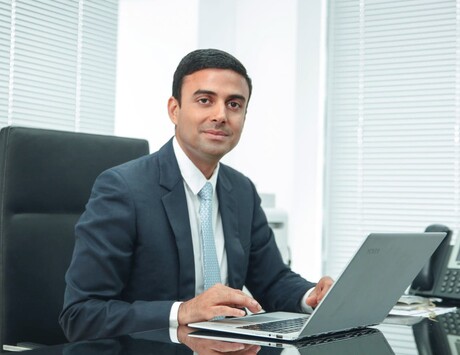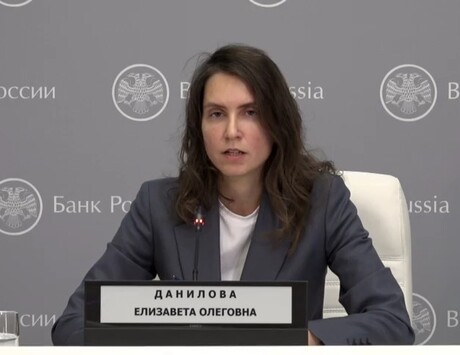Thomas Heatherwick is the creative superstar who gave us the Olympic cauldron and a new Routemaster. Now he has designs on our river
In the midst of the emotional tempest following the death of Diana, Princess of Wales in 1997, the actress Joanna Lumley had an idea. What if a piece of nature, a garden bridge, were built over the Thames to reconcile and soothe the public? Lumley is a force of nature in her own right, yet even she could not persuade the then Chancellor Gordon Brown to sign up to the idea. As with all public projects, many different interests must be squared. Vision and will are not always enough.
What changed everything was the Olympics. Lumley’s friend and confidant on the garden bridge, the designer Thomas Heatherwick, became a world superstar for his Olympic cauldron. London, suddenly full of Heatherwick’s new buses, brimmed with ambition. The Mayor began demanding new wonders for the city. Heatherwick produced his plans for a garden bridge.
Today, the £150 million project goes into its first stage of public consultation. Readers of the Evening Standard can give their opinions on the big questions (how shall we fund it?) and the smaller ones, such as should dogs be allowed?
The bridge is a leap of faith for Londoners but step by step it is looking achievable. Almost half the money has already been offered by private donors. The Mayor and the councils are behind it. The Chancellor George Osborne, not known as much of a romantic dreamer, pledges that it WILL happen.
The reason everyone has come to believe in the bridge — including the owner of the Evening Standard, Evgeny Lebedev, who has agreed to be a governor of the scheme — is the persuasive capabilities of Heatherwick himself. The rich and powerful (New York mayor Michael Bloomberg, George Osborne, Boris Johnson) have all been captivated by their visits to his studio in King’s Cross.

Nourishment for soul and senses: 'What I won’t forget [about the Olympics] is the wild planting — the flower meadow. It was Danny Boyle’s green and pleasant land,' says Thomas Heatherwick
It is here, among the strange inventions and sculptures and an enchanting 120-strong workforce of bright-eyed artisans and engineers, that Heatherwick weaves his magic. He looks and dresses a little like a figure from Grimm’s Fairy Tales. He serves hot chocolate, spiced with lemon, and fruit cake. He is father to six-year-old twins, who must wonder where the bedtime story ends and real life begins.
Heatherwick, aged 43, says that his secret lies in his interest in the mechanics, as well as the idea. As he puts it: “I try not to become cynical or burdened down but understanding all the parts is essential to flying.” He is dedicated to his work, which absorbs most of his life. “You have to do whatever the project takes. I never want to think, oh I could have done better.”
When Heatherwick was commissioned to make his Olympic cauldron he was told there was a rule against moving parts. “We thought, actually, what you mean is: ‘Please make sure it doesn’t go wrong’,” he smiles. For instance, Sydney’s Olympic cauldron became stuck as it rose out of the water. But that, says Heatherwick, is because nobody expected it to be difficult.
“Whereas I made 1,000 moving parts for our cauldron, so it was obvious that I had to worry about the motion.”
His interest in processes set him apart even when he was studying at the Royal College of Art. Unlike his contemporaries, he had already completed years of study in practical design at Manchester polytechnic. Heatherwick encountered his idol Terence Conran in a corridor at the RCA and begged him for five minutes of his time. Conran gave him three hours and then invited him to stay at his home for four months, while Heatherwick designed the birch gazebo that still stands in Conran’s garden.

Route to nature: how the bridge will be accessed from Temple Station (Picture: Arun)
“I felt that, where there was a great idea, we should make it happen,” says Heatherwick. “My experience, when I studied, was that there were famous architects with amazing ideas, but they didn’t happen.” His determination to see an idea through has become his life’s theme. The bridge is the apotheosis. “With this role I knew that I needed to be the designer and the midwife,” he says.
First the idea: the command from City Hall was that Heatherwick should produce something that captured the spirit of Britain, in the way that the Olympics had managed to do. As with the Olympics, he reflected on the notion of combining grandeur and modesty, sometimes achieved through a sense of location. Commissioned to undertake the complete refurbishment of Worth Abbey in Sussex, he noticed how moving the altar to the centre of the church increased its potency. “What is a more powerful point than the centre of the circle?”
Heatherwick became convinced that a bridge had to be at the epicentre of London. This was not a moment for “regeneration” of outer areas, this bridge needed a backdrop of very famous landmarks. “We musn’t take the centre for granted,” he says. “Strangely, there has been a lot of worry about how to breathe life into the south bank and maybe not enough thought given to the north bank, where a dual carriageway separates it from the river.”
He saw that, while Waterloo Bridge is magnificently placed, it lacks “the human experience”. “The view is good but you would never [arrange to] meet anyone on that bridge. [In importance] people come after buses, taxis and motorbikes. The Thames is twice the width of the Seine. We need something that nourishes the human scale.”
Heatherwick selected a bend in the river just by Temple and metaphorically planted his staff. “Temple is the most central Tube station in London but so underused. It is such an unloved stretch.” If the location is the grand part of the project, the garden is the “human nourishment”. Heatherwick harks back to the Olympics.
“What I thought was that of course the venues were impressive, and the Games amazing, but what I won’t forget is the wild planting — the flower meadow. It was Danny Boyle’s green and pleasant land.
“We are used to quite a harsh experience in the architectural landscape around us. Often environments don’t have a human scale, but plants give you that. There is something unpretentious about them — this project will have slugs and worms and autumn smells, rather than grand, Versailles-like power-planting.”
Indeed, on board the project is the renowned gardener Dan Pearson, who has a vision of 100 plant species, starting with ancient botany on the north side and changing through the glades and scarps to a pioneering planting on the south side.
As for the bridge itself, Heatherwick insists it must be true to the human scale. Its shape — narrow at the edges, wider in the middle — encourages people to linger rather than simply cross it. “The river is a wonderful piece of nature, yet we have treated it like an obstacle to get a car across. The test for the garden bridge is if you would meet someone there.”
As a man of process, Heatherwick understands that grand projects can hang in the balance. There are always good reasons not to build things. As his hot chocolate cools and the light fades in his studio, he appeals to Londoners not to lose this chance. “You could argue this is not essential, but if life is only about the essentials, you end up with those wretched places in the world that I don’t want to visit.”
If the bridge is to be built, it must start in 2015 and finish in 2017, in order not to conflict with the schedule for London’s other great infrastructure project — the supersewer. “If people want the bridge to happen, then it has to happen now,” urges Heatherwick. “Otherwise, it will just be one of those nice things that didn’t happen.”
Thinking about the bridge, he has realised how much London still owes to the Victorians, including the profusion of parks and gardens.
“I am a little embarrassed by how much we rely on the ambition of the Victorians. We should be as ambitious now. I have two small children and I would like to walk across a garden in the middle of London with them, to make them proud and to make them feel that the world isn’t finished. I believe in progress.”



